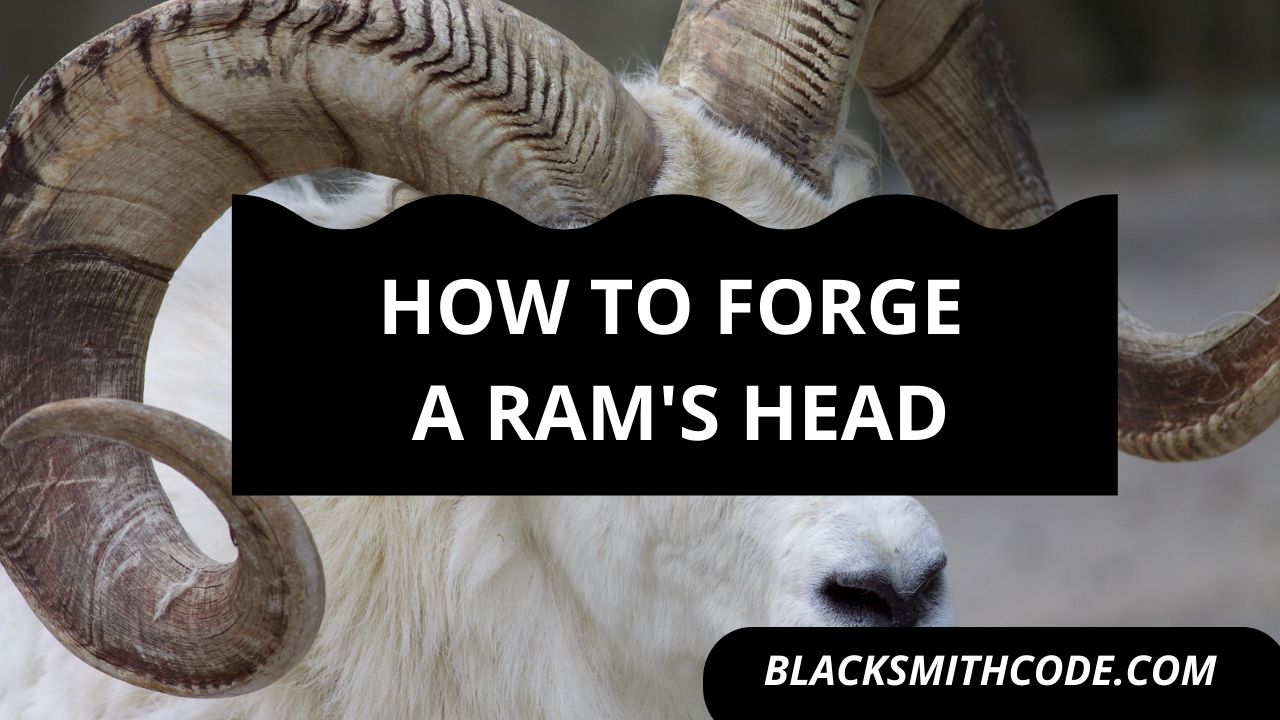Do you know why blacksmithing is considered as a creative piece of art? Blacksmiths are capable of creating anything from metals. Let’s find out how blacksmiths forge ram’s head from metals.
Forging of various animal heads is one of the ways that blacksmiths show their artistic prowess. It is one of the most creative work blacksmiths engage themselves in. Forging a ram’s head is one of those processes that define blacksmiths in the artistic sense.
Aside from the necessary blacksmithing skills, you also need creativity for this process. You need to be patient and maintain focus on what you intend to do.
Here are steps that will serve as a guide for the forging process of a ram’s head. It can also be helpful in the forging process of other animal heads.
Essentials Tools
Instructions on How to Forge a Ram’s Head
Step 1: Get Your Materials
The materials for the forging process of a ram’s head are not so different. However, you must have a few things at the back of your mind before proceeding with the process.
Note:
- You would need to keep the temperature of the material reasonably high for most periods of the work. The temperature needs to be high at the early stage of the process.
- Make precise measurement on the material you intend to use
Step 2: Make Precise Measurements
Ensure that all the materials you are using are in precise measurement.

Step 3: Form the Template Shape
Now, it’s time to set the ball rolling for the proper carving when learning how to forge a ram’s head.
Quick Steps
- Heat the metal to two inches or more, depending on the size of the head you want to create.
- Place the heated part of the metal on your anvil.
- Once you see a suitable radius, drive the metal down.
- Ensure that you hold the bar in an upright position to avoid folding.
- Keep dressing the sides as you drive down.
- Wide this edge. Keep in mind that this part of the metal will form the horn.
- Tamper the metal until you reach a blunt point.
- Carry out the second heating. This time, this heating will move down the metal a little more
- Hold the bar over the far side of the anvil.
- Ensure that you hold the bar at a level of about 30 degrees to give you the desired shape.
- Drive the bar down a little bit down the edge of the anvil. Have it at the back of your mind that you are trying to create the neck and under jaw of the ram head.
- Perfect the space between the jaw and other bars to make it look like a neck.
- Bend the bar a little bit to give you full access to work on under the head or jaw.
- You can back up the head with a hammer while working on it.
- Give the head a suitable shape. Also, work on the thickness and the length of the head.
Note:
You need to keep the temperature of the bar reasonably high almost entirely through this process. It will make it easy for you to bend and shape it. Re-heat the bar if you need to, but ensure you do not distort what you have done before with the new heating.
Step 4: Carving
Now, this is the most creative part of this process for forging a ram’s head. Carry it out in the sequence that best suits you. This step aims to add all the ram head details to the bar.
You can consider rounding the head of the ram if you have to. However, you should note that this step is highly flexible, and you can add every bit of your creativity.
Quick Steps
- Cut out the essential part of the head.
- Shape out the nose and heating the head to the working temperature.
- Use a hand cutting tool to cut out the details.
- Heat the entire head and cool it slowly to anneal it
- Punch out the eyes and nostrils on the head while still cold.
- Heat the head and curl the horn. Also, mark the center of the ear for projections to form the horn
- Add other details to give you a perfect head.
- Chop off the head from the remaining part of the metal.
Step 5: Finishing
Now, it’s time to fine-tune your work and give it an appealing outlook. Take your time to correct any mistake and re-heat if you need to. Polish the head and add other finishing.
The above method is suitable for most animal heads. The variation is mostly with the shape of the ear, horn, and projection of the mouth. The level of your creativity will improve your result for this process.
FAQs on How to Forge a Ram’s Head
Question
What are the uses of forged ram head?
Ram’s head is a highly commercial commodity. It has a lot of household and industrial uses. It is useful as door knuckles, key holders, fire pokers, bottle openers, and others.
Question
Can I forge a large ram head?
Yes. There is no restriction to the size of the ram head you can forge as long as you have the right amount and type of materials, and you also make your precise measurement.
Question
Can I forge ram head as a beginner?
You can forge a ram head as long as you have the essential blacksmithing skill, and you are creative. Nevertheless, it would be best if you were cautious while carrying out the process. It would be best to carry out your first try under the supervision of an experienced blacksmith.
Video
Precautions
Here some precautions that should take while you are forging a ram’s head. These precautions will protect you from work-related hazards.
Likewise, it will improve your work output;
- Be careful not to burn yourself while working on the ram’s head since it will be hot for most of the process.
- Take caution not to cut your finger or palm while carving the details of the head.
- Use your eyeglasses, gloves, and other safety gear while working on the blacksmithing workshop.





